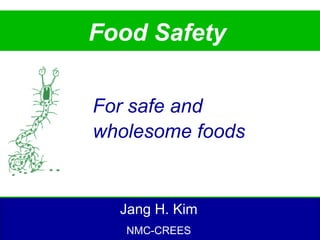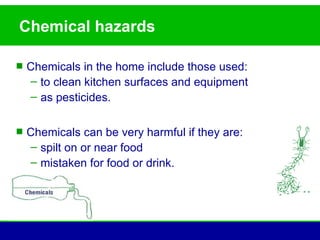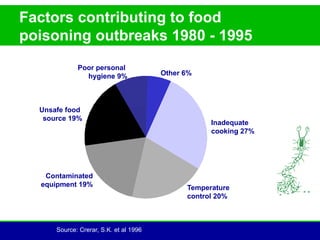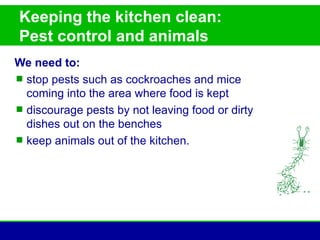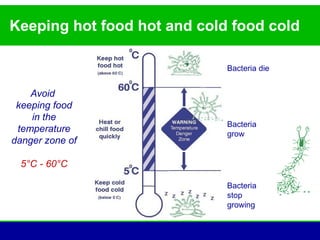This document discusses strategies for preventing food poisoning in the home, including keeping hands and surfaces clean, properly storing and handling foods, thoroughly cooking high-risk foods, and maintaining proper hot and cold holding temperatures. Foodborne illness can result from chemical, physical, or biological hazards in foods. Common symptoms include vomiting, diarrhea, and fever. Proper hygiene and food safety practices kill harmful microbes and prevent contamination.
